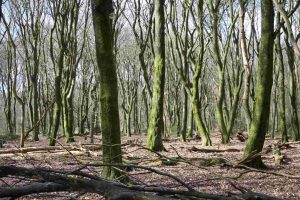Cultural heritage

Cultural Heritage and forests
Since forests are relatively undisturbed compared to surrounding landscapes, they are a rich source of cultural heritage. Nearly all forests in Europe result from the work of many generations. Each has left its traces, which can still be seen in the forest today, often dating from before sites became forested.
Unintentional damage to cultural heritage
However, across Europe valuable forest sites and historical artefacts are being damaged in routine forest management activities. This usually occurs unintentionally due to a lack of attention, awareness or experience.
Probos supports cultural heritage
Probos is a pioneering researcher and promoter of forest cultural heritage since 2002. We disseminate knowledge and information to forest managers and other stakeholders in the Netherlands and have helped raise awareness of the subject significantly.
Based on our broad experience in the Netherlands, we can also help other countries which want to protect the cultural heritage of their forests. We offer support in compiling inventories of heritage in the field and in awareness raising through:
- sharing best practice
- consultancy
- research programmes
- training courses


Cultural heritage guide
We have produced the guide ‘Cultural heritage in sustainable forest management; The Dutch perspective’, which is also available in German and French. The objective is to share lessons learned and help others avoid reinventing the wheel. The guide includes numerous examples, mainly in the Netherlands, but also from other European countries. It is targeted at forest managers and others involved in the field, such as researchers, policy makers, students and volunteers.
Examples of cultural heritage in forests
Potential sites of cultural heritage interest in forests include:
- boundary banks and dykes
- celtic felds, burial mounds
- charcoal-burning platforms
- saw pits
- bloomery and blast furnace sites
- tar production sites
- kilns
- features associated with game management and forestry
- ancient wood pastures
- historic planted forests
- stands of old industrial or pre-industrial coppice
- coppice with standards (trees that are not coppiced)
- pollards and other ‘working trees’ for the production of acorns, fodder, tar, resins and other products

